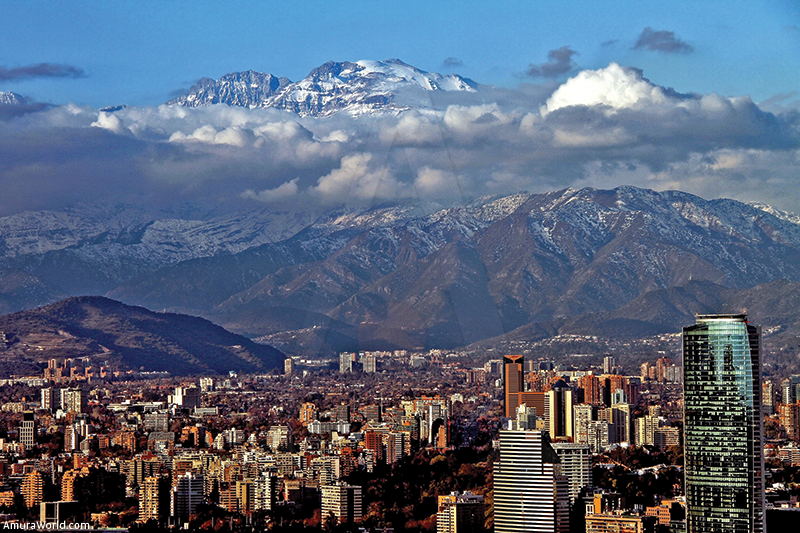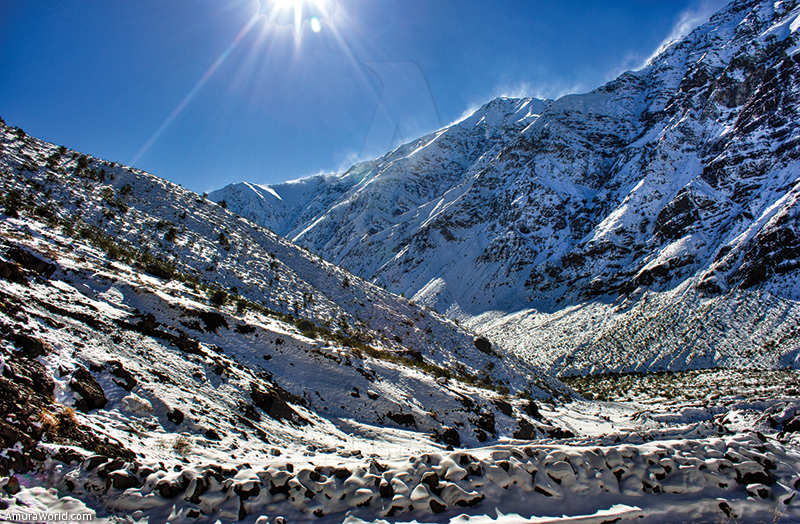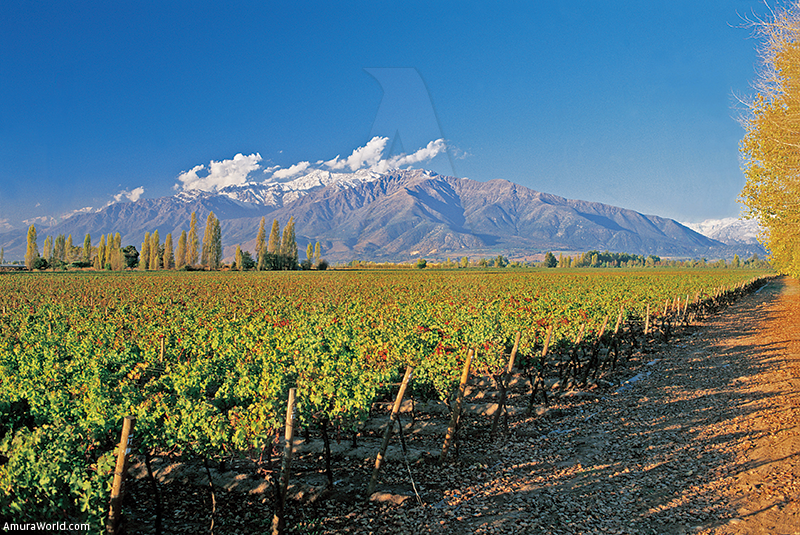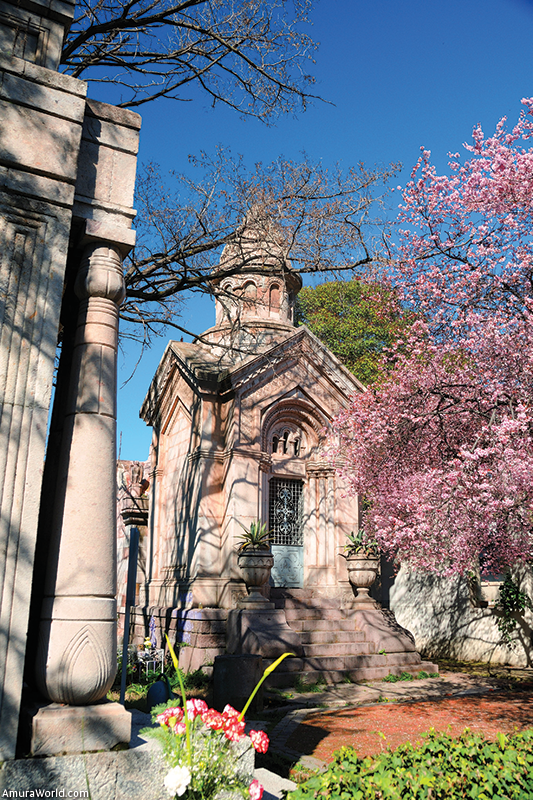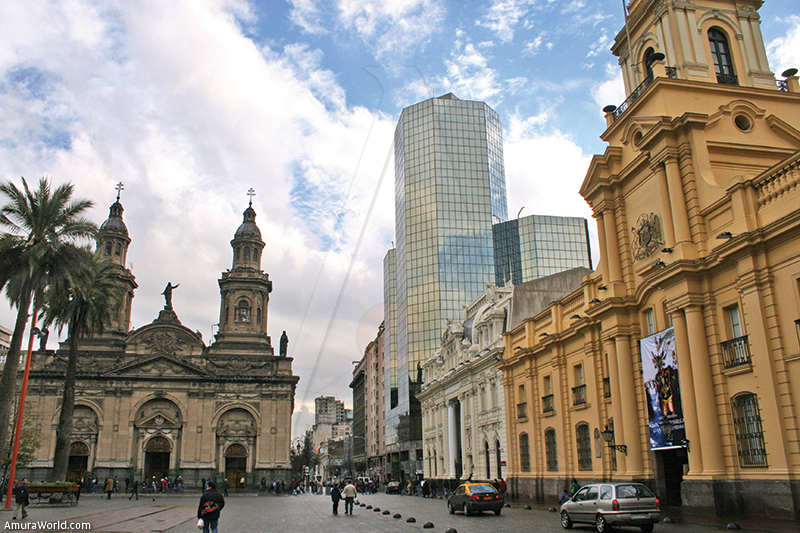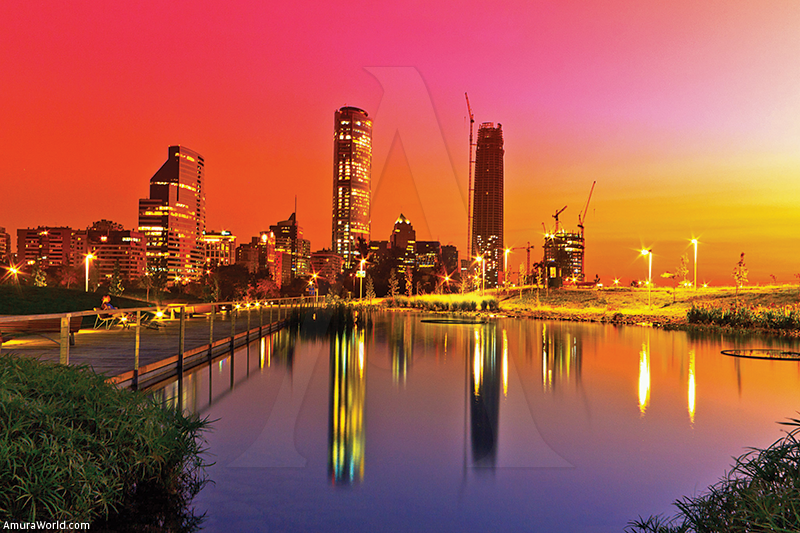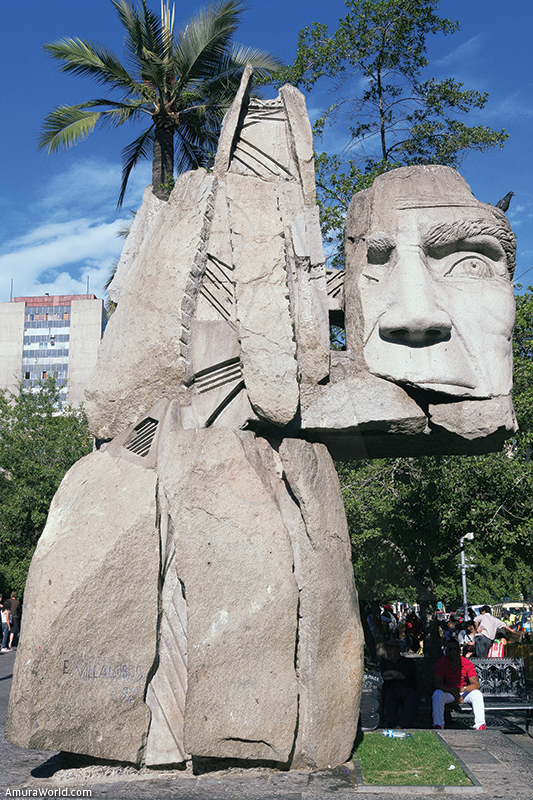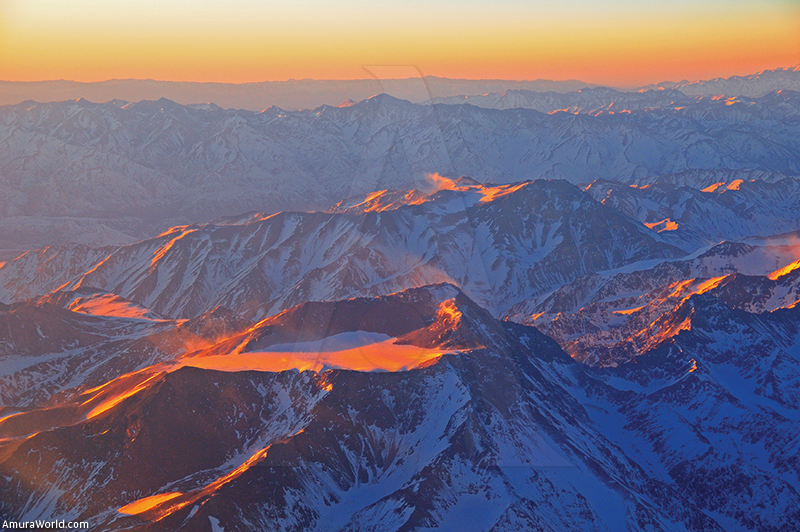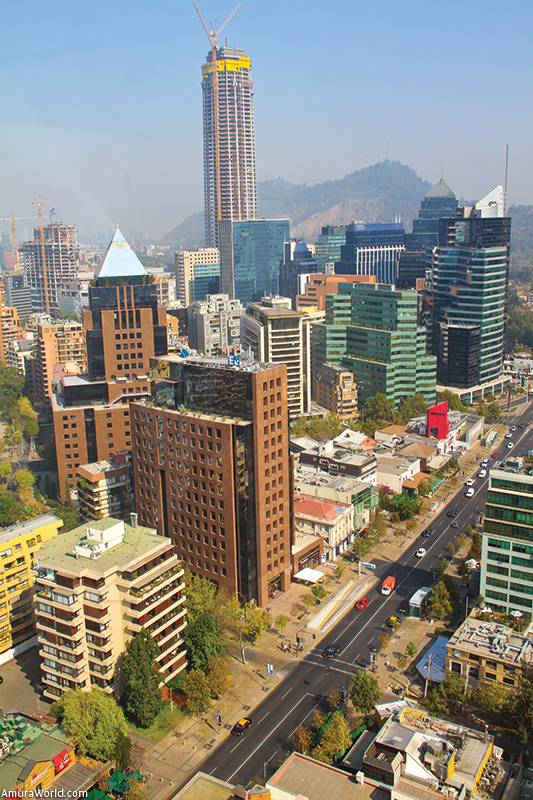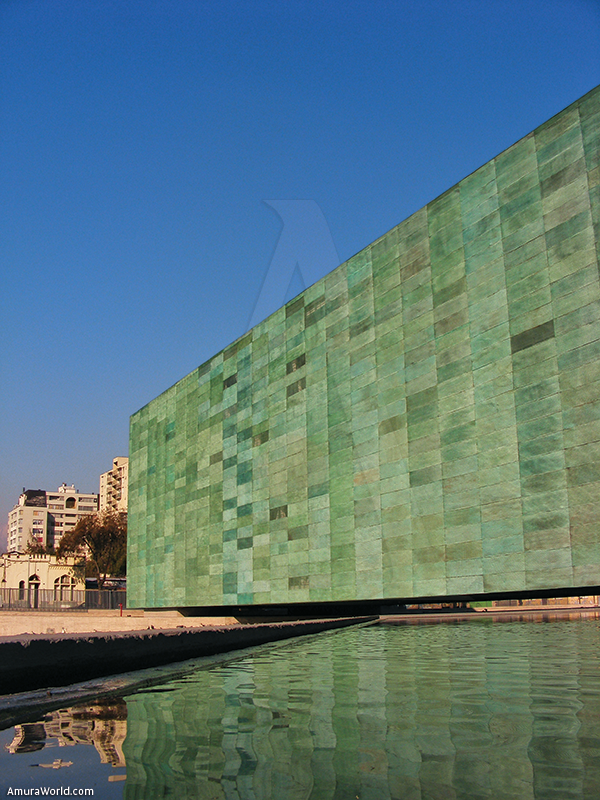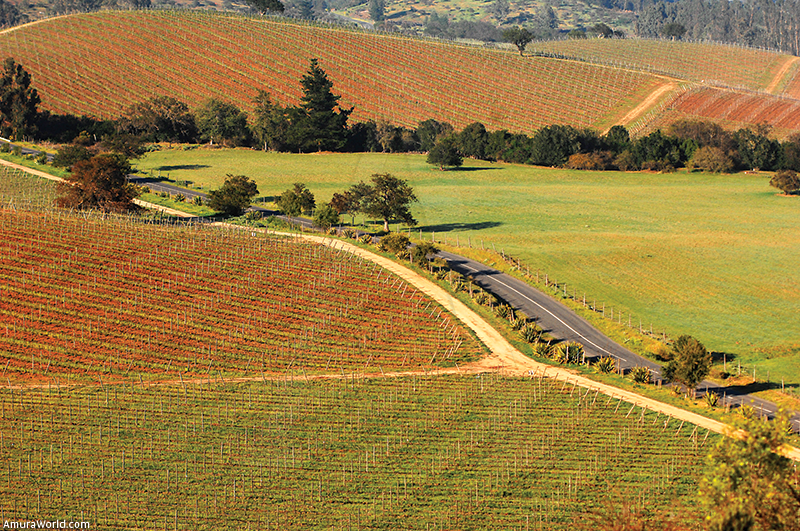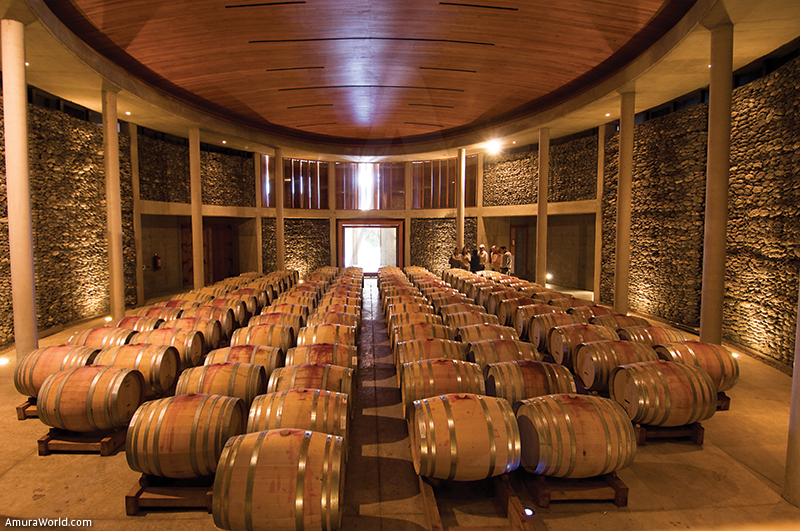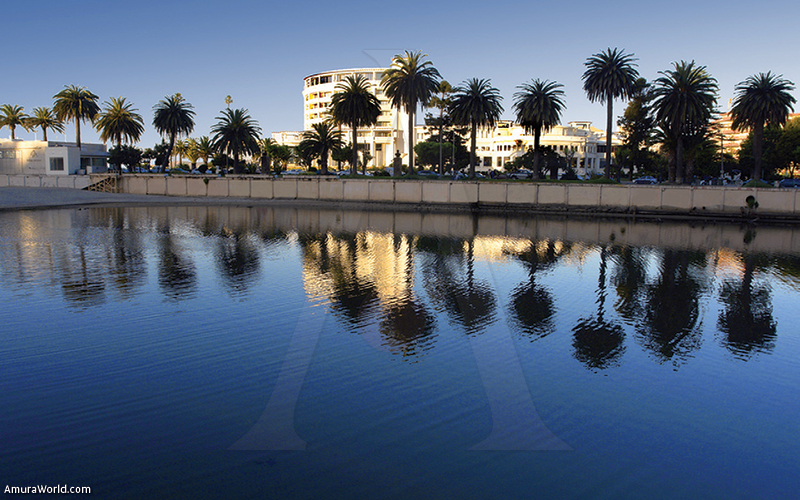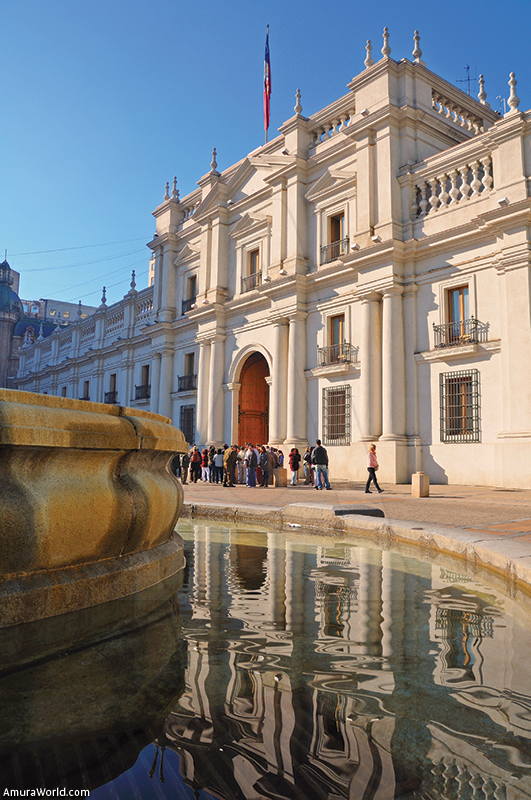{socialbuttons}
The city below the Andes
A panorama of modern buildings against a close background of high snowy mountains is breathtaking. It is Santiago, the Chilean capital city, which almost leans in a wall formed by the Andes. Although it is just about 80 km in a straight line from the coast, the altitude of this city of 6 million is 570 meters above sea level.
The first inhabitants of the region were picunches groups. The city itself was founded at the foot of the Huelén hill, today St. Lucia, by Pedro de Valdivia, on behalf of King Charles I of Spain on February 12, 1541. First it was the capital of Nueva Extremadura and its urbanization was designed by Pedro de Gamboa, following the orthogonal blue print of Roman origin (streets intersecting at right angles).
In 1810, Santiago became the capital of Chile and took over its own development. Today is a cosmopolitan city, with a green charm; the Metropolitan Park, with over 700 hectares (1966) and a cable car that runs 5 kilometers to the top of San Cristobal Hill.
Day 1
LAN Airlines covers South America, Mexico, the Caribbean, USA, Canada, Oceania and Polynesia. We flew from Mexico and arrived at Pudahuel International Airport, 20 minutes from downtown Santiago. The arrival is impressive you can have a close look from the air of the summit of the Aconcagua, the highest peak in South America. When this giant of almost 7000 meters above sea level melts; the water strangely prefers to search the sea across Argentina and travel a distance many times longer to flow into the Atlantic instead of the Pacific
In Santiago we stayed at the wonderful W Hotel (www.starwoodhotels.com/whotels/), one of the most luxurious of the city. The W offers the modern version and a cozy atmosphere in their restaurants, in the spa, the gym and rooftop pool which offers a panoramic view of this high-rise buildings surrounded by mountains. The W has 196 rooms and suites, including 4 “WOW SUITES”. Their rates range from $ 319 to $ 569 dollars per night.
Other luxury hotels are the San Cristobal Tower (www.starwoodhotels.com/luxury/), offering traditional luxury in the banks of the Mapocho River. Their rates are between 249 (rooms) and $ 2.109 (suites). The Presidential Suite has a cost of 3.109 U.S. dollars.
The Santiago Park Plaza has 138 rooms and suites, with prices ranging from 157 to U.S. $ 3.000 (Presidential Suite). The Ritz-Carlton Santiago (ritz-carlton.santiagodechile.com /) which has 205 rooms and suites, their prices range between $499 and $ 2.399. Rates of Grand Hyatt Santiago (grand.hyatt.santiago.com) vary between $470 to $970 U.S. for its 310 luxury rooms and suites. The InterContinental offers 377 luxurious rooms and suites, with prices between $279 and $759 dollars. The Aubrey Santiago Hotel (www.theaubrey.com) deserves a special mention. Their rates don’t fall into the super luxury category ($280 to $550) it only houses 15 rooms and suites and is highly rated by guests and National Geographic, an organization that awarded The Aubrey with the qualification of “Best Hotels in Chile”, among other awards it has earned.
As the LAN flight arrives early, after settling into the hotel and relax, we went to eat at the central market. It was opened in 1872; it occupies a Rococo style Scottish cast iron structure. After strolling through the stands we went “Donde Augusto”, very popular, where you can taste the ancient Creole recipes: Paila Marina (seafood casserole), madmen, barnacles, sea squirts, clams, mussels, crab and oysters, sea urchins, cuttlefish, oysters, ... The atmosphere is wonderful, the colors and flavors are from rough and cold seas. Tried the Curanto, typical preparation of the island of Chiloé, prepared with seafood, meat, sausage, lima beans, chapalele, potatoes, and milcaos peas.
After this excellent meal, we took a stroll around the Bellavista neighborhood, at the foot of San Cristobal Hill. We experienced its old streets, houses with their tall windows and its bohemian style cafes and restaurants. We visited the home of the immortal Pablo Neruda “The Chascona”; where the portrait of Matilde by Diego Rivera hangs. It has an interesting collection of works by Chilean and foreign painters, African carvings, furniture and the coziness of the home created by Neruda. It is a lovely place. It allows you to feel the poems and the poet’s social interest.
We took the cable car up to Cerro San Cristobal where the shrine of the Immaculate Conception is an important icon of the city. It is distinguished by the 14 meter high image. It has an amphitheater, a chapel and from its terrace, you can admire a superb view of Santiago and the Andes. In the Parque Metropolitano, we visited the Tupahue pool resort, where you can enjoy a mural designed by John O’Gorman and Mary Martner. We also visited the pool Antilén at the tip of the Chacarillas hill. This park includes a beautiful forest, a zoo and a botanical garden.
The Bellavista neighborhood, situated between the Mapocho River and San Cristóbal Hill. It used to be aristocratic but suddenly became bohemian. It has night clubs where you can listen to Chilean music or jazz, trendy shops and cultural centers. Pio Nono Street is its main drag. Along the streets of Constitucion, Dardignac and Antonia Lopez de Bello you will find fine dining restaurants, while on Loreto, you can find the typical Peruvian or Chilean bars and eateries occupying big old houses.
Later, we returned to the hotel and enjoyed the wonderful spa and gym, relaxing the body and mind after the hectic day. We also enjoyed a massage, and everything you need to feel in nirvana, before diving into the irresistible pool that crowns the building of the W. We also had fun at the Red2one bar and the Whiskey Blue. These are the first Rande Gerber’s lounges in South America. They are a cross between cutting-edge design, high fashion, extravagant pieces of art and delicious cocktails. We closed the day by dining in NoSo at the W Hotel. This restaurant combines the elegance of French cuisine with the lush flavor of Mediterranean cuisines, under the leadership of Jean-Paul Bondoux and chef Sebastien Fontes. There is a selection of seafood, foie gras with honey sauce and truffle cream, Patagonian lamb with eggplant couscous and meat a la parmentier with Chilean pinot noir. Sauce. Of course.
Day 2
We returned to NoSo. Once contented, we walked around the neighborhood of Las Condes. There you will find a fine business and shopping district. We discovered its beautiful architecture, a sophisticated environment, the most exclusive departments towers along with elegant skyscrapers of offices, wide shaded boulevards, art galleries and restaurants. At Bernardo O’Higgins Avenue, the liberator of his country, we arrived at the Alameda that also bears his name and the Paris-London district. The buildings in this area of Santiago are extraordinary as most of them built in a European style of the 1920’s. You will find there the San Francisco church, the oldest in Santiago where, at the altar, there is an image of the Virgin brought by Pedro de Valdivia. This convent is a museum with various relics, colonial art and a beautiful cloister.
Following the Alameda we passed by the University of Chile. Built in 1872 by neoclassical architect Fermín Vivaceta, one can feel the pride of its elegant courtyards and its Hall of Honor. We left behind the television tower and reached the Palacio de la Moneda, seat of the presidency and ministries of Chile. The monumental building is situated between two plazas, Constitucion and Ciudadania. The building was completed in 1812 as a mint and functioned as such until 1845, when it was decided to convert it the seat of the federal government. It is the building bombed during the military coup of September 11, 1973 to overthrow President Salvador Allende. The room where he died was closed by Pinochet and was restored with original furnishings and reopened by President Bachelet in 2008.
We walked the downtown streets adorned with beautiful civic buildings showing uniform elegance. We visited the Church of Santo Domingo (1771), The Casa Colorada (1769), and the former Royal Customs House (1807), which houses the Museum of Pre-Columbian Art, with unique pieces like pottery, mummies and textiles, the former National Congress (1876), the Edwards commercial building (1893) and the Palace of Justice Courts (1929).
These beautiful streets led us to the Plaza de Armas, where one will find the Cathedral (1748-1775), showing towering altars and beautiful paintings. We continued to the next building, the elegant Archbishop’s Palace (Palacio Arzobispal)., On the square is the Main Post Office (1882), the former Palace of the Royal Court (1807) which houses the National History Museum, and the building of the Municipality of Santiago (1895). Arriving at the Alameda we were surprised by the size and superb French architecture of the National Library (1913-1924).
The Cerro Santa Lucia, where in 1541 the city of Santiago was established, is a large park with fountains, gazebos, walkways and stairs leading to the rebuilt Hidalgo castle. Nearby is the Teatro Municipal, where the performances of opera, the symphony, the ballet of Modern Art and the Philharmonic Choir are presented. The elegant Palace of Fine Arts and the Museum of Contemporary Art are located in Forestal Park, on the banks of the Mapocho.
After seeing all this beauty, we headed to the National Museum of Fine Arts to admire the impressive collection of sculptures and national and international works of art, including Flemish, Italian, and French. From Pissarro to Rodin, from Rubens to Zurbarán. We stopped also at the Mapocho Cultural Center. It is an old train station with French style architecture, built in the early last century.
Just as planned, we went to eat at the Piojera which is the most famous “picada” in Chile. We faced the difficult task of choosing between the famous “Terremoto” cocktail, the chicha, the perniles, arrollados or malaya and its grilled meat. The music imposes a cozy and familiar atmosphere. Maybe that’s why it is here that you can always find here politicians, poets, artists, philosophers and writers.
That night, we went to the magnificent Teatro Municipal de Santiago (1857) constructed in the neoclassical style. We attended a fantastic performance of “La Bayadere” ballet, music of Ludwig Minkus and choreography by Luis Ortigoza. Leaving this enchantment, we had dinner at the famous restaurant Canto del Agua and explored its nortina gastronomy. It is famous for its exceptional sea food, fish and meat, not to mention their delicious desserts. We closed the evening with a night-cap at “Club Eve”, a dancing lounge with elegant and beautiful people.
Day3
We woke up early to go to the gym and get in shape before going skiing. Only 44 Km from Santiago, we choose Valle Nevado ski resort because of its great slopes. Of course there are other ski resorts, as Portillo, El Colorado, La Parva, Farallones, Lagunillas, Laguna Verde, each with its own particular attraction. We toured a beautiful canyon and reached Valle Nevado. The view of the mountains is awesome. It is a humbling experience.
Valle Nevado offers the largest ski area in South America. It has 37 km of well-maintained tracks, three hotels and eight restaurants. Ski routes are color-coded according to their degree of difficulty, black being the most challenging and exciting. The sky was blue and the sun was shining. We truly enjoyed the black slopes. Since exercise makes you hungry, we stopped to eat at “La Fourchette d’Or” (The Golden Fork), a restaurant with the most exquisite gourmet menu. It was a wonderful day, unforgettable and just an hour drive from Santiago.
We arrived back at the W Hotel and decided to relax in the pool, and refresh in order to be ready to go to dinner to La Casa de Cena. They serve Picoteo, shrimp cocktail, pil oysters , deer a la Cazadora, salmon au jus, and a wonderful tiramisu, all accompanied by wine from the Altair cellars, the best in the region. After dinner we went to have some fun at “Sala Murano,” one of the disco clubs favored by the stars with a great atmosphere
Day 4
After a good night’s sleep in impeccable beds of the W and before our tour the vineyards near Santiago, we enjoyed an exquisite breakfast at NoSo. At the Maipo Valley we discovered the Cajon de Maipo, a beautiful canyon that penetrates the Alps adorned with snowy peaks and contrasting with the desert vegetation. We reached the Termas de Plomo 2,900 meters above sea level, whose thermal waters come from the San José volcano and spread over rustic natural wells.
Further beyond we found the Termas Colina. They are well hidden between two rows of high mountains, a landscape bathed in the silence that is only possible at 3,500 meters above sea level. The natural wells seem like outdoor terraces. Their water reaches up to 70 ° C, (158 ° F), although the pools where you can dip in for relaxation or medical reasons are temperate.
As we left the Cajon del Maipo, going back in the Alto Maipo Valley, we found vineyards that spread over the hills, at the foot of the high peaks of the Andes. We visited the vineyards of Huelquén, Portal del Alto, Mountain, Hacienda Chada, Haras de Pirque, Pérez Cruz and principal. Our palates began a tour in the best wineries, Viña Santa Rita, in Alto Jahuel, 45 kilometers from Santiago. There, we tasted excellent wines as we were explained the wine making process. A real pleasure! We continued to the Concha y Toro, in Pirque, where we tasted three different wines. We dined at “La cocina de Blaine “ a traditional restaurant where we tasted the raviolini with gamberi and fungi sauce accompanying it with a Casillero del Diablo Cabernet Sauvignon, Concha y Toro.
We continued our tour to Viña Portal del Alto, near Alto Jahuel and Viña Tarapacá in Buin. We passed near by the Viñas Cousiño Peñalolén and ended up at Undurraga near Talagante. Once we had tasted the best wines in the Maipo Valley, and with certain joy thanks to this, we reached our home for the night: La Casona (www.mateticvineyards.com/casona/), in the valley of San Antonio, surrounded by the Matetic vineyards.
La Casona is an exceptional experience it has luxury, charm and elegance. We swam in the pool while enjoying the scenery, the pool table, the rooms and finally the restaurant “Balance”. We were offered fresh seafood, delicious lamb and duck, accompanied by the best wines Matetic from the Corralillo Premium line and the EQ Ultra Premium, like Sauvignon, Pinot Noir and Chardonnay.
Although there is not a Chilean wine that has made the top 100 list last year, the prestigious Wine Spectator magazine believes they continue to advance. Nathan Wesley wrote late last March:
“Only a few short years ago, Cabernet Sauvignon and Carmenère dominated the leader board in Chile’s wine industry, but how times have changed. After a recent series of difficult vintages, these traditional varietals are a step off their best performances, leaving the door open.
Day 5
We were awoken by birdsongs. As we were already having breakfast the first rays of sun lit up the Andes and the lush landscape. The day started with a walk along the Huayun path, followed by a horseback ride to the ranch El Rosario to see its vineyards, on the way to the winery and enjoy its wines. The food at the “Equilibrio” restaurant on the banks of a small lake was succulent. After lunch we visited the Pablo Neruda’s home in Isla Negra. Neruda had three houses in Chile, La Chascona, the Isla Negra and La Sebastiana, as well as a home in Spain. After this, we toured the Casablanca Valley with its hills covered by perfectly aligned vines, and then, back to Santiago.
We checked into the W for our last night and went for dinner to the Bali Hai in Las Condes. We gladden our hearts with Chile’s typical food and enjoyed the folk dancing show from northern, central and southern Chile. The show culminated with the typical dances from Isla de Pascua and Polynesia.
Santiago is a great small capital which retains the easy air of a village, despite being a full grown metropolis. It has wonderful charms with its cultural life, some of the best restaurants and bars, fascinating museums and some lovely walks to stroll slowly.
If you are traveling on LAN to South America on a trip to Patagonia, the Isla de Pascua or the Atacama Desert, you should enjoy a stopover in Santiago.
Santiago is a welcoming city that greets you with its green valley at the foot of the Andes, surrounded by vineyards, and only 1 hour and a half drive from the sea. The people are lovely and you can live the luxurious experience of a stay in style. Santiago is an ideal destination,. It will enchant you with its treasures and will captive you forever.
Text: Patrick Monney/ Alfonso López Collada ± Photo: Servicio Nacional de Turismo de Chile/Patrick Monney/schn/ Rita Willaert/Panoramio/ iancowe/Jaime Alvarado

